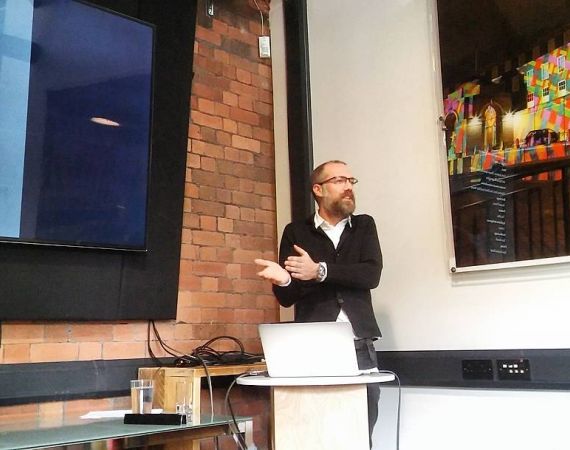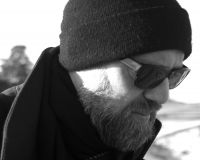Lunchtime talk write-up
Posted on Fri 21 Apr 2017
It Must Have Been Dark By Then
Studio resident Duncan Speakman is known for creating urban audio walks that use music and reflective text to shift people’s perception of their surroundings.As part of the Ambient Literature research project he has created ‘It Must Have Been Dark By Then’, a piece that explores how…

Posted by
Speaker

Duncan Speakman
Duncan is an artist working with mobile audio in uncontrolled public and private spaces. His current PhD research is in the compositional structures of locative audio works and their relationship to current ecological debate.Studio resident Duncan Speakman is known for creating urban audio walks that use music and reflective text to shift people’s perception of their surroundings.
As part of the Ambient Literature research project he has created ‘It Must Have Been Dark By Then’, a piece that explores how documentary approaches could be used to make stories from remote locations relevant in an audiences immediate environment.
In January and February 2017 Duncan travelled with different collaborators across the swamps of Louisiana, the edge of the Tunisian Sahara and through empty Latvian villages, collecting sounds and stories from disappearing places. The resulting piece uses a mixture of geo-locative audio and printed material and is the first in this new direction for his practice. In this talk he will discuss the design process along with the potentials and problems of this form of work.
It Must Have Been Dark By Then will launch 6 - 9 May in Bristol Central Library. Find out more here
Five Things I learned
1. Duncan strived to make the remote relevant and made a deliberate decision to include stories in print. His aim was to make an experience that didn’t just involve passively listening, but also actively opening the book to read the next part of the piece to keep the user engaged with the content.
2. Another creative decision was not to include the users surroundings on the GPS map. The user is tasked with having to find certain things, such as an apartment, or a piece of wood; then once the user has chosen an object, the app remembers the location so it can be revisited later on in the journey.
3. Each person’s journey is unique as the time it takes to find each object would vary. Duncan wanted to shape the arcs of the composition to mirror erosion of locations, however he had to troubleshoot how to plan how long each segment of music would need to last. Duncan overcame this issue by stopping readers in their tracks and allowing the music to stop and begin into the next segment.
4. Although Duncan wanted to convey human impact on environments, he didn’t want to create a moral piece. He was more concerned with the groups of people he met in these locations and their personal experiences. Duncan wanted to preserve and bring back these encounters with people so he wrote the score and script in response to the field recordings made in each location.
5. Duncan Speakman didn’t want to go down the VR documentary route and is more interested with making people have a connection to remote places, in the context of the real world. He's aware he's made a solitary experience and is working towards having people share their ideas.
